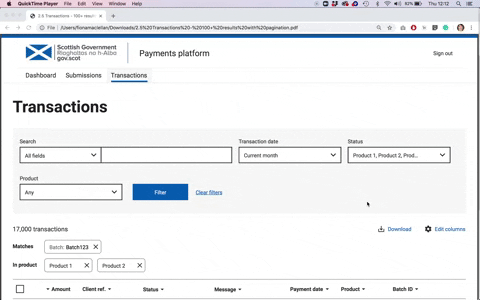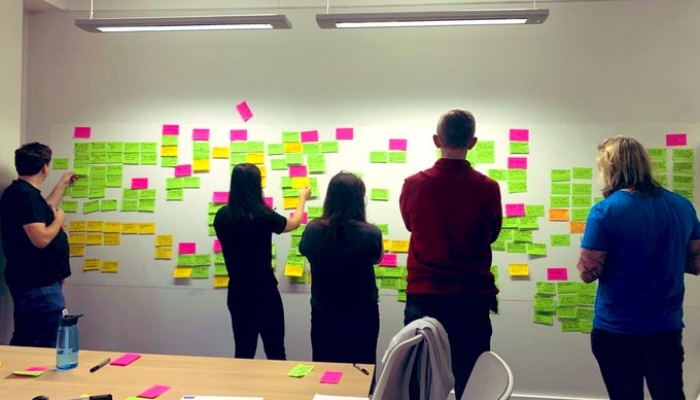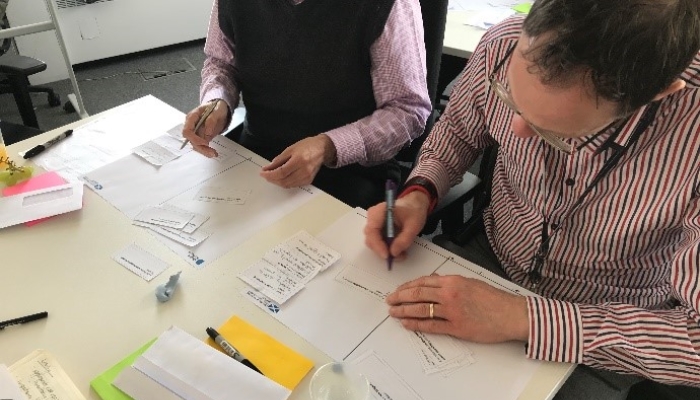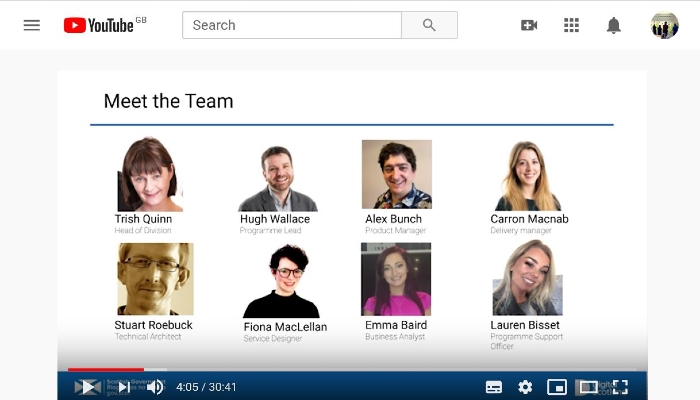Digital
SG Payments Alpha & beyond
August 12, 2020 by Fiona MacLellan No Comments | Category Digital Public Services, Digital Scotland, Scottish Approach to Service Design
Blog by Fiona Maclellan, Senior Service Designer, Product and Commercial Division.
In 2019 we announced our payments project and introduced the team working on it. Since then we’ve not given you an update on this blog, but that doesn’t mean things have stood still. We’ve been busy building a prototype digital service, as an Alpha phase, and in this post we’ll show you what the prototype looked like, provide insights into our design process, and update you on the preparations for our next phase. So let’s jump in.
We’re focusing on improving the way the public sector makes payments to citizens, so for example your pension, benefits or grants. A shared payments platform is one of the key commitments in our Digital Strategy for Scotland. It will allow us to make the most of existing legacy systems, preparing us for the introduction of new powers and supporting organisations who are already making payments.
The Scottish Government handles several million financial transactions each year, but that number is expected to increase to potentially as many as 25 million as more powers are devolved from Westminster. Currently there are multiple ways of making and taking payments across government and the public sector. Existing systems and processes work, but aren’t very joined up or equipped to handle such a significant growth in transactions in the years to come. This has the potential to cause problems and cost money if we don’t take action. That’s why we’re building a new payments service, designed to meet user needs.
The way we work
The payments project has taken a user-centred approach from the outset. Our approach has followed the Scottish Approach to Service Design through the Discovery phase, Alpha build, and is setting the direction for our next steps. As a project team, our mindset for applying this approach was not as nice to have, but rather that designing and building with users is a driving component for success and innovation. You can find out more about the Scottish Approach to Service Design by downloading the Scottish Government guide.
Meeting our users’ needs
The Payments team are working hard to create a linked-up service to manage payments safely and effectively, forming a new piece of national infrastructure. Our challenge is to design and deliver a continually-improving, shared service that has the potential to evolve over the longer term. This will process outbound payments and provide a trustable transaction history that interfaces with public sector organisations’ financial services – it will consider inbound payments in the longer term, but at this stage our focus is to make outgoing payments well. Many of the user needs we’ve identified so far relate to trust, security and control, for example here are some findings from our user engagement:
“As a citizen, I need to be able to have a customisable service so that I can use the service/method(s) that work best for me.”
“As an organisation, I need to be able to identify and reconcile payments, information and reports, so that I can know when payments have been made/received.”
“As an organisation, I need to be able to increase size and quantity of payments, so that I can grow operations and serve more citizens.”
Collaboration all the way
Since the project started we have been working with three partner organisations (Social Security Scotland, Independent Living Fund, and Scottish Public Pensions Agency) to find out how best to support their specific needs. Their input has been invaluable, enabling us to build and test a robust and secure system that rethinks how payments can be made in Scotland through a centralised and standardised service. On top of this we’ve consulted with other industry experts, from the Royal Bank of Scotland to the Inclusion Foundation to the Government Banking Service.
We have looked at prior work done by colleagues in other governments all over the world, including the GOV.UK Pay service developed by the UK Government Digital Service. We have learned a huge amount from the team who created and maintain GOV.UK Pay, a service that handles inbound payments via credit cards, direct debit and mobile transactions. With our focus on outbound payments (such as benefits, pensions, and grants) we are working hard to create a new service to meet these additional user needs.
When we refer to digital platforms we are often speaking of intangible technologies, which work in the background and are only visible to developers. We’ve built an Alpha service, divided between a front end (for organisations to use) and the back end code, following open data principles and stored on Github. We believe that good services have touch points that are human-centred. This is why our payments service will come with an organisational dashboard, clear on-boarding materials, and a dedicated team working to make continuous improvements. This is the service design which we will continue to develop in Beta.
Our progress is shared and feedback gathered through regular user engagement, updates to ministers and an advisory group made up of different government organisations. This helps us know we are on the right track and we have support at a national level. Added to this, we passed our Alpha Digital First Service Standard assessment which aims to make sure that services in Scotland are continually improving and hold users’ needs in focus. It’s great to have a wide range of experts feeding into our project.
What’s next?
We reached the end of Alpha development in March and have since been working on a business case and procurement for the Beta phase. During Beta the team will be delivering an operational payment platform, undertaking the necessary user engagement, development and support arrangements to deliver live outbound payments for a select group of organisations.
As part of our pre-Beta work, we held an online supplier engagement event online on 31 March 2020. Here we invited the market to hear all about our project and ask us questions, ahead of us procuring a supplier for the next phase of the project. The presentation is available here: https://youtu.be/_kfhDy5IECE
The Invitation to Tender for Payments Beta was issued in July through the Dynamic Purchasing System Lot 1. If you were registered on DPS Lot 1 prior to the tender issue date, there’s still time to submit a response; the closing date is 24 August 2020.
We have lots more we want to share and are already working on our next blog post on insights from running remote engagement sessions. Now more than ever, in this time of physical distancing, it’s important that we keep connected and continue to build momentum on our long term goals. There’s also a story to tell you about the iterative design process we’ve been using to get this far, diving into accessibility, design systems and user experience.
If you have any questions or comment feel free to post below or get in touch with us directly: SGPaymentService@gov.scot
Tags: digital, digital public services, digital sector, digital transformation, platforms, ScotPayments, service design, SGPayments, user centred design






Leave a comment